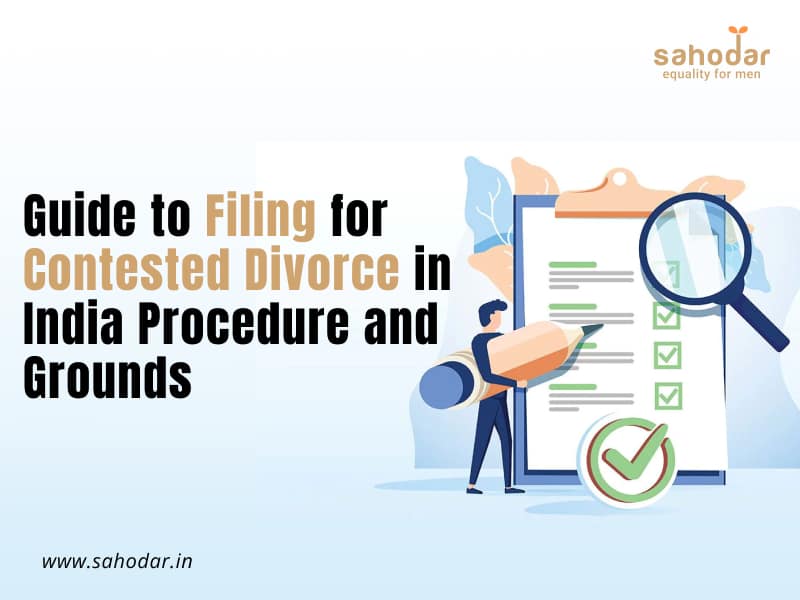A divorce is pursued when a married couple is unable to maintain their relationship. The decision to file for divorce can be made mutually by both spouses, resulting in a Mutual Consent Divorce, or by one spouse, leading to a Contested Divorce.
A Mutual Divorce typically takes less time than a Contested Divorce, with the former taking around 6 to 9 months and the latter taking 2 to 3 years or more in some cases. Contested Divorce is initiated by one spouse when the other is not willing to agree to the divorce.
In India, when one spouse desires to dissolve their marriage but the other spouse is unwilling, it is referred to as a Contested Divorce or One-Sided Divorce. This situation arises when the separation decision is not a mutual one, and one spouse has valid reasons for separation and is fully committed to ending the marriage. Both the husband and wife contest against each other in court.
Hindu Marriage Act, 1955 allows for Contested Divorce to be filed on various grounds
These grounds include Adultery, which refers to a spouse engaging in sexual relations outside of marriage;
Cruelty, which is based on one spouse causing trouble and annoyance for the other; Desertion, which involves one spouse abandoning the other without justification or intention of returning;
Conversion, which refers to one spouse forcing the other to convert to a different religion;
and Mental Disorder, which allows for divorce if one spouse is suffering from a mental disability.
The appropriate court for filing a Contested Divorce is the Family Court, which has jurisdiction based on various factors such as the place of marriage, the last known address of both parties when they were living together as a couple, and the current address of the parties.
How to file Contested Divorce?
The following procedure can be followed for filing for divorce:
- A petition for divorce is filed in the family court.
- The court will then issue a summons to the other spouse to notify them of the petition.
- The opposite party can respond to the summons by submitting a reply in court with the assistance of a lawyer.
- As part of the Contested Divorce process, the court may refer the case for mediation to resolve the dispute between the parties in an amicable manner before granting the divorce. A neutral mediator can assist both parties in understanding and resolving their issues.
- If the mediation process fails, the evidence stage begins where both parties are required to present their evidence to support their claims. The petitioner is examined and cross-examined first, followed by the opposite party.
- After the evidence is submitted, both parties are summoned for the final argument. Based on this, the court makes a final decision on the dissolution of the marriage.
- After the final argument, the court issues a judgment and provides a decree for the divorce.
After the divorce decree is granted by the court, both the husband and wife need to sign the divorce papers to bring the legal proceedings to a conclusion. This marks the final step in the process of ending their marriage. In case either party is not content with the court’s decision, they can file an appeal in a higher court within three months from the date of the order.
In a contested divorce case, apart from the divorce petition, other related petitions such as maintenance, alimony, child custody, and property separation also need to be addressed. These issues are usually dealt with separately in court. However, in the case of mutual consent divorce, both parties may consider these matters mutually.

